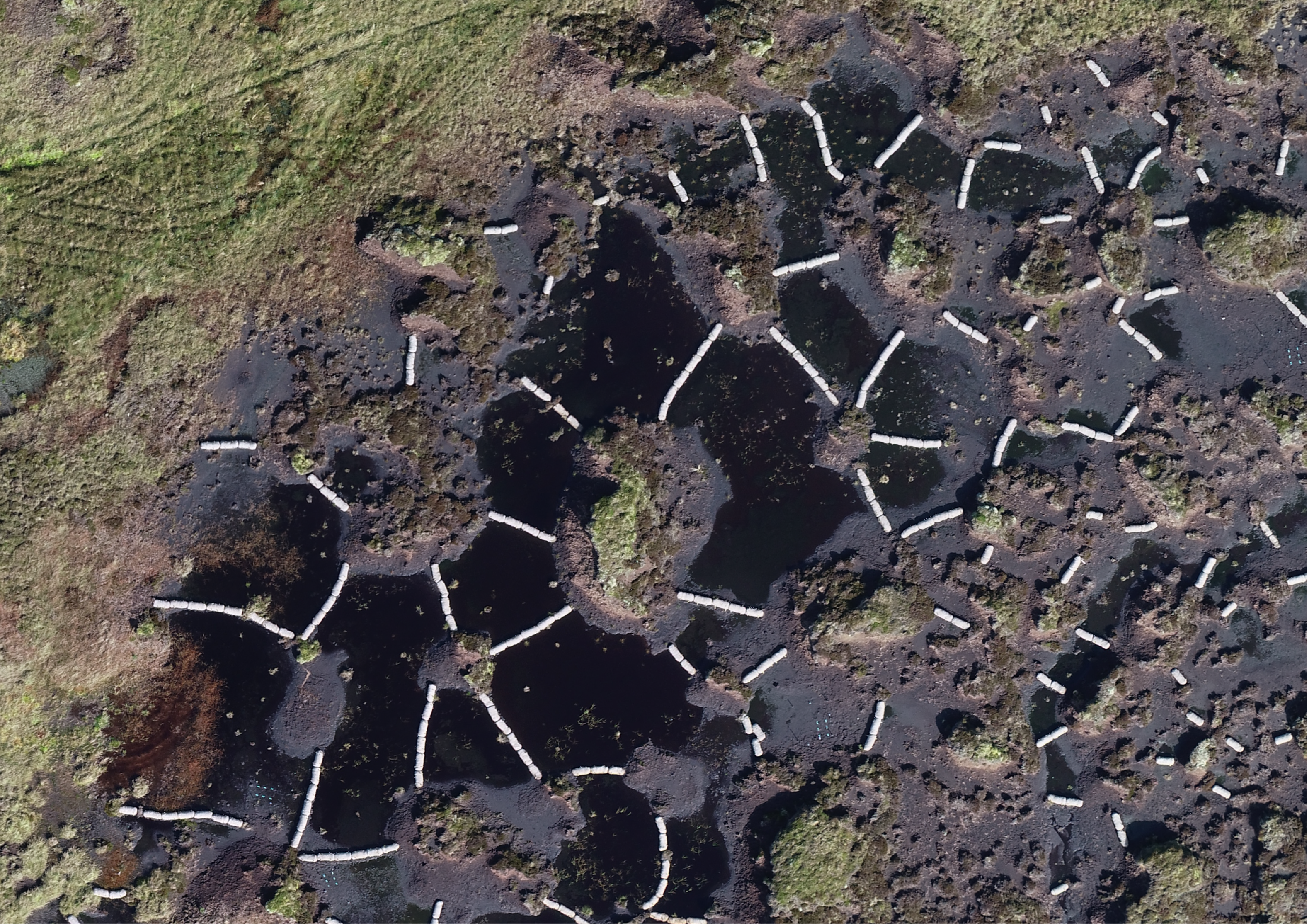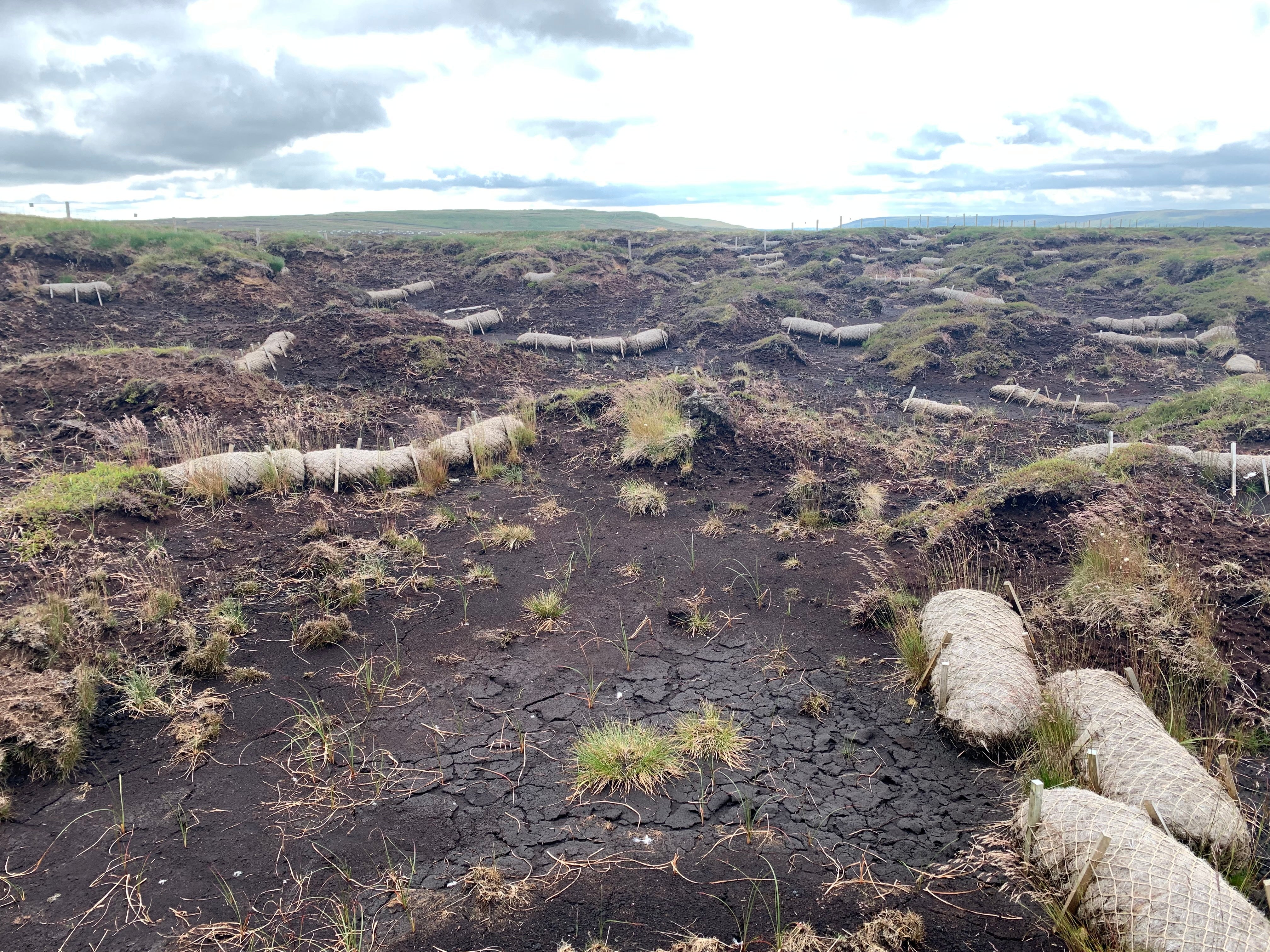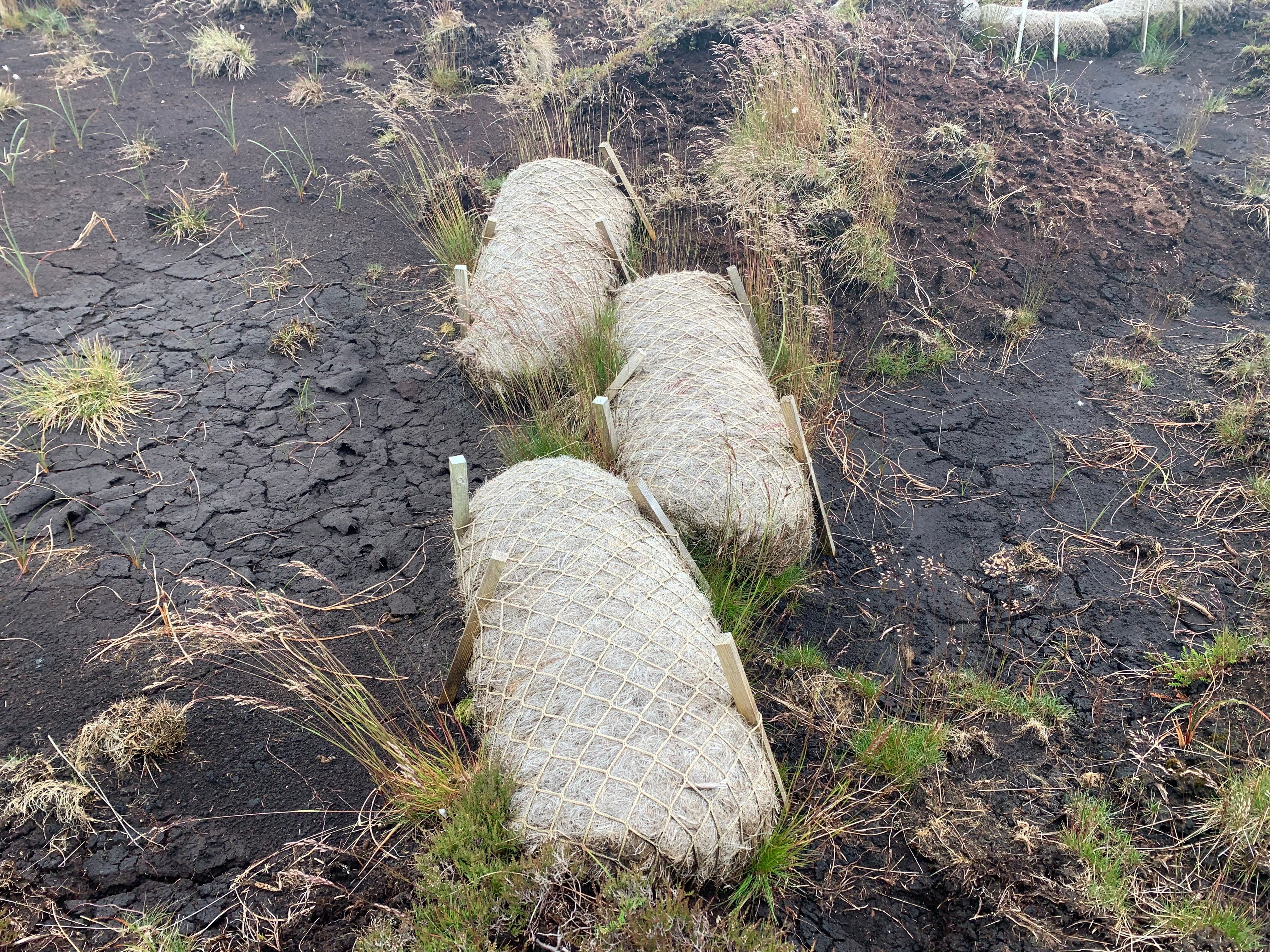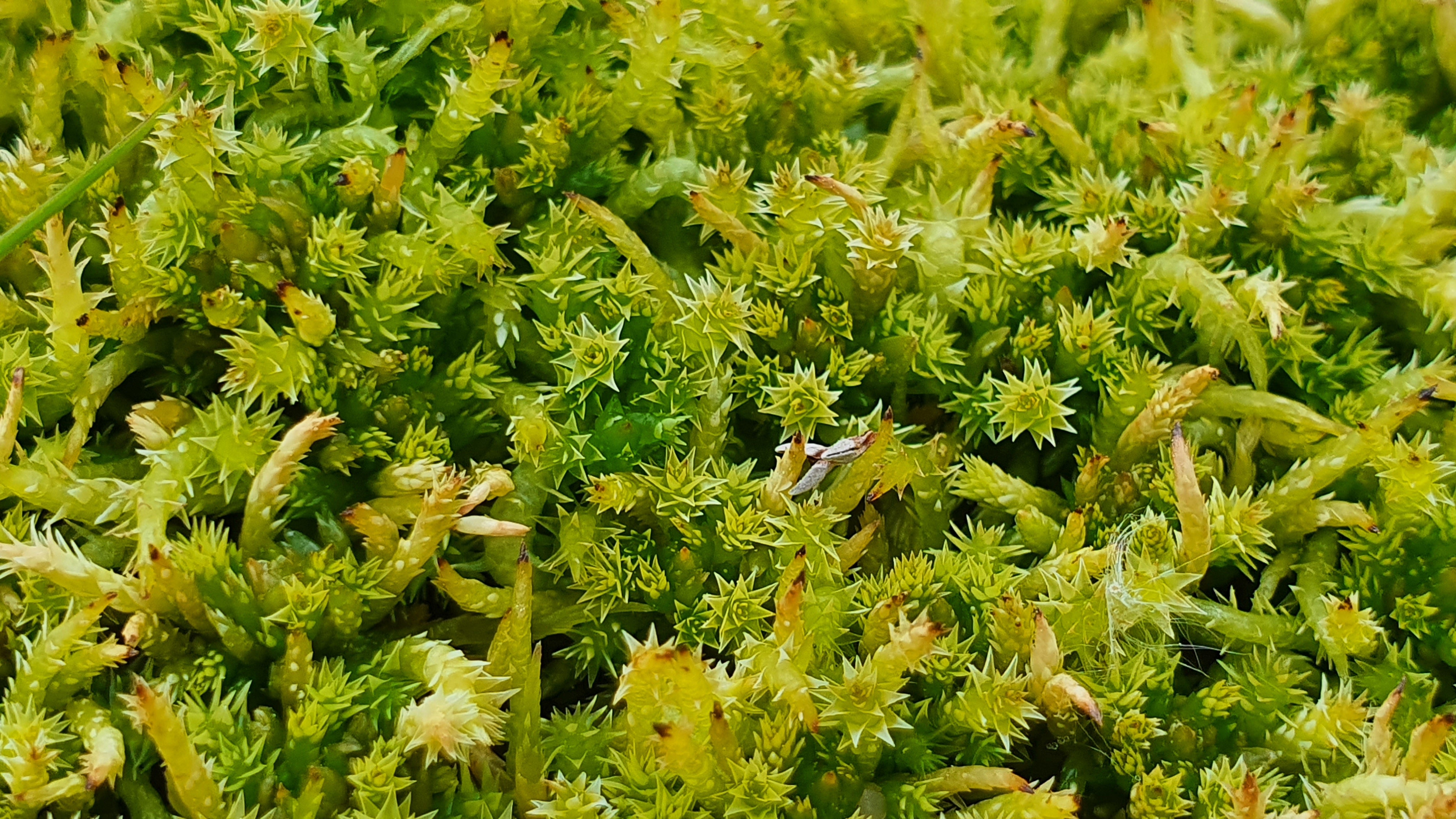‘It’s emotional’: A plan to restore the north of England’s great peat bogs
The UK’s heavily degraded peatlands account for around 5% of our total greenhouse gas emissions. Daisy Dunne visited a project in Yorkshire to find out how we can restore them


Your support helps us to tell the story
From reproductive rights to climate change to Big Tech, The Independent is on the ground when the story is developing. Whether it's investigating the financials of Elon Musk's pro-Trump PAC or producing our latest documentary, 'The A Word', which shines a light on the American women fighting for reproductive rights, we know how important it is to parse out the facts from the messaging.
At such a critical moment in US history, we need reporters on the ground. Your donation allows us to keep sending journalists to speak to both sides of the story.
The Independent is trusted by Americans across the entire political spectrum. And unlike many other quality news outlets, we choose not to lock Americans out of our reporting and analysis with paywalls. We believe quality journalism should be available to everyone, paid for by those who can afford it.
Your support makes all the difference.High up in the Yorkshire Dales on a blustery July morning, conservationist Dr Tim Thom is leading the way across a stretch of semi-restored peatland. The ground is soft and spongy underfoot – and every step forward creates a loud squelch.
“That’s the sound you’re supposed to hear when you walk across a peatland,” he tells The Independent.
Dr Thom and his team at the Yorkshire Wildlife Trust have spent the last four years working to restore Fleet Moss, one of many heavily degraded bogs spread across Yorkshire. Under new plans announced by the Wildlife Trusts this week, he is joining forces with conservationists in Cumbria, County Durham, Lancashire and Northumberland to develop plans to restore 4,000 hectares of peat across the north of England over the next 20 years.
Peatlands are waterlogged environments where plants decay very slowly, eventually forming a carbon-rich soil called peat.
Experts and public figures alike have clamoured to stress their significance in tackling the climate crisis. Prince Charles describes them as “Britain’s tropical rainforests”; the UK’s chief climate adviser Chris Stark calls them a “ticking timebomb of emissions”; while scientist Dr Christian Dunn says they are the forgotten “superheroes of the natural world”.
“If the UK’s peatlands were a superhero, they’d have to be Deadpool because they’re seriously degraded,” says Dr Thom.
When peat bogs are healthy, they are capable of storing vast amounts of carbon. Across the world, peatlands cover just 3 per cent of the Earth’s surface, but store one-third of its soil carbon.
But when they are degraded – through overgrazing, draining for agriculture or pollution – they switch to being net emitters of planet-warming CO2. In the UK, around 80 per cent of all peatlands are degraded, with the greenhouse gases they emit accounting for around 5 per cent of the country’s total emissions.
Restoring and protecting the UK’s peatlands will be key if the country is to meet its legal target of reaching net-zero emissions by 2050, according to the country’s climate advisers.
Repairing damaged peat bogs is no easy task, however. At Fleet Moss, Dr Thom leads a team of nine who spend the winter months working hard to restore the degraded site.
Though Dr Thom isn’t certain what led to the degradation of this particular bog, he suspects a combination of factors such as pollution, overgrazing by sheep and efforts to drain peatlands of their natural moisture after the Second World War are to blame.

The 327-hectare site is currently a patchwork of semi-restored bog, made up of deep squelchy peat covered by a range of mosses and plants, and degraded bog made up of dry and shallow peat with very little vegetation.
“Restoring an upland peatland like Fleet Moss generally involves two steps,” he explains.
The first step is to try to put a stop to the loss of water from the peat soils. To do this, the team uses large sausage-shaped sacks full of coconut husks to block up any eroding cracks in the peat. They also use dams made from planks of timber and piles of rock – airlifted in by helicopter – to trap peat and stop it washing away from the bog.

The second step is to try to protect the top of the bog from further degradation. Degraded peatlands are dry and bare, meaning strong winds can cause the top layer of soil to simply blow away.
To stop this from happening, the conservationists sometimes cover the top of the bog in a blanket of cut heather.
They also reintroduce some of the plants that are often found on top of bogs. These include common cotton grasses, so-named because their flowers look like balls of cotton wool, and sphagnum, peat mosses notable for their water-storing abilities.
“Sphagnum can hold 20 times its volume in water,” Dr Thom explains as he pulls a clump from the ground and wrings it out like a sponge.
“It was actually used to dress wounds in the Second World War because it’s super absorbent and also has antimicrobial properties.”

After the work is done, the team must wait patiently. Peatlands can take decades – and sometimes even hundreds of years – to fully recover from a disturbance.
“It’s an emotional project to work on,” says Dr Thom. “We are starting to see the results, but the work will probably have to carry on way beyond my lifetime.”
In addition to locking up carbon, repairing England’s peatlands could bring a host of other benefits, he says. The unique water-logged habitat provided by peatlands attracts a range of wildlife. Fleet Moss is visited by short-eared owls, hawk moths and otters – among other species.
We are starting to see the results, but the work will probably have to carry on way beyond my lifetime
Healthy peatlands are also capable of soaking up large amounts of rainfall, helping to reduce worsening flood risk. “Some scientific models suggest that if Yorkshire’s peatlands are managed well they could reduce the flood peak in York by 20 to 30cm,” says Dr Thom. “That’s a lot of roads and buildings spared from flooding.”
The Yorkshire Wildlife Trust’s peatland restoration work currently costs around £2m a year – and relies on various sources of funding including government grants and donations from companies and individuals.
“We’d like more funding to do our work, we always do,” says Dr Thom.
Across the country, the government is not taking sufficient action to restore peatlands at the rate required, according to its own advisers, the Climate Change Committee (CCC).
The government has pledged to restore 32,700 hectares of peatland every year by 2025. But the CCC says the area of land restored should be more than double that – around 67,000 hectares a year – if the country is to meet its climate goals.
Efforts to restore the country’s peatlands also risk being derailed by the climate crisis. Long hot spells can leave peatlands dry and vulnerable to wildfires.
“We’re not trying to restore peatlands to what they once were as the UK isn’t the same as it was a century ago,” says Dr Thom. “All we can do is try to reverse the damage, make them wetter again so that they are more resilient to the changes in climate we will experience over the coming decades.”
Join our commenting forum
Join thought-provoking conversations, follow other Independent readers and see their replies
Comments